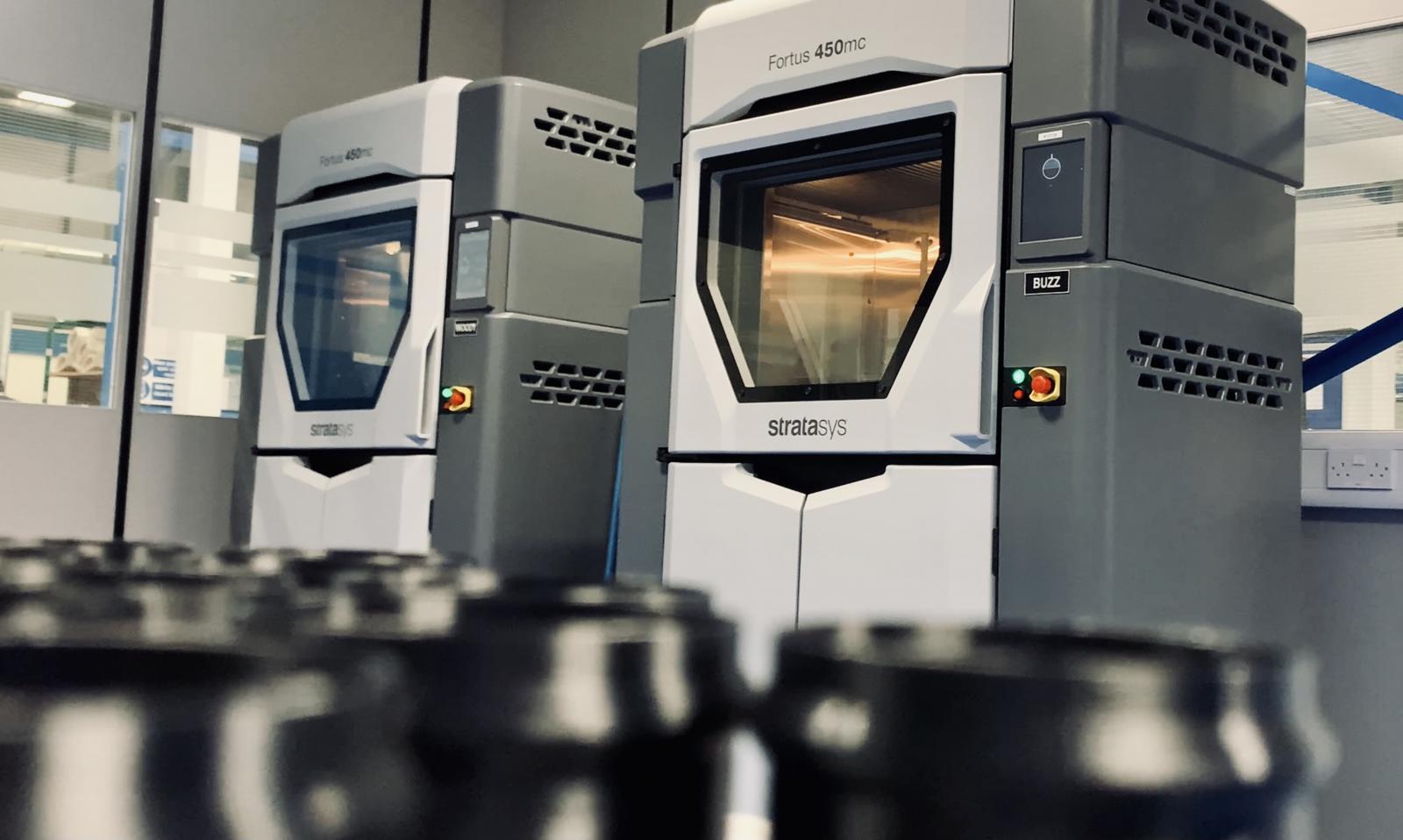
Senior Aerospace BWT in Macclesfield has seen savings of up to 75% on aircraft interior parts by using 3D printing instead of traditional machining
The company is part of Senior plc, a global manufacturer of ultra-lightweight, low-pressure air distribution systems for aerospace. It has enhanced its capability in additive manufacturing by installing Stratasys 3D printers to spearhead the design, production and deployment of 3D-printed
Senior Aerospace BWT is equipped with two industrial-grade Stratasys Fortus 450mc 3D printers, and has undertaken a rigorous testing and qualification program of Stratasys’ aerospace-grade ULTEMTM 9085 resin on behalf of its key customers. Having completed and approved the necessary qualification reports, it is now fully capable of 3D printing interior aircraft components to meet the test and traceability needs of aircraft manufacturers.
The company has a global customer base covering regional, military, private jet and rotorcraft markets – with 3D-printed components for use in low pressure air ducting systems and air handling in aircraft interiors.
Darren Butterworth, CEO, Senior Aerospace BWT, comments: “Senior Aerospace BWT is now an industry leader in driving the increased adoption of thermoplastic 3D-printed parts for aircraft, enabling our customers to benefit from the significant benefits that this technology delivers. After two years of intensive R&D work, we have qualified the associated products and processes, which enable us to produce flight-ready parts quickly and cost-effectively for our customers. We now have the capability of deploying a robust, accurate, repeatable and traceable process – which is what the industry demands.”
Senior Aerospace BWT is seeing significant savings in terms of component weight, cost and lead-time when using Stratasys FDM-based additive manufacturing in place of traditionally sourced aluminium. For certain parts, savings are as much as 75% – particularly for small order quantities.
“In many cases, minimum order quantities for off-the-shelf aluminium parts make traditional manufacturing simply unviable when we may only need a handful for one aircraft,” explains Butterworth. “If you add to that the small, complex geometries of some parts, it just does not warrant the cost and time to CNC machine them in aluminium.”
Key to the company’s success with additive manufacturing has been Stratasys’ aerospace-grade materials, which helped simplify the qualification and material characterization process.
Senior Aerospace BWT first began investigating the commercial viability of Stratasys FDM 3D printing for interior aircraft parts over four years ago via a technical partnership with a service bureau. Through the collaboration, Senior Aerospace BWT delivered its first duct incorporating a 3D printed part for flight use on regional passenger jets in 2018. Since then, the company has supplied its customers with hundreds of lightweight, flight-ready interior aircraft parts using FDM, often incorporating highly complex geometries. The company’s success with FDM laid the foundation for the investment in its own in-house capability via Stratasys’ local partner, Tri-Tech 3D.
Looking ahead, Senior Aerospace BWT plans to extend its additive manufacturing services offering into other industries beyond aerospace, such as automotive and defense. The company expects to boost capacity with the installation of additional Stratasys Fortus 450mc 3D printers, a key part of its strategic objective to invest in fluid conveyance product development and manufacturing processes to help facilitate growth through innovation and continually enhance returns on investment.